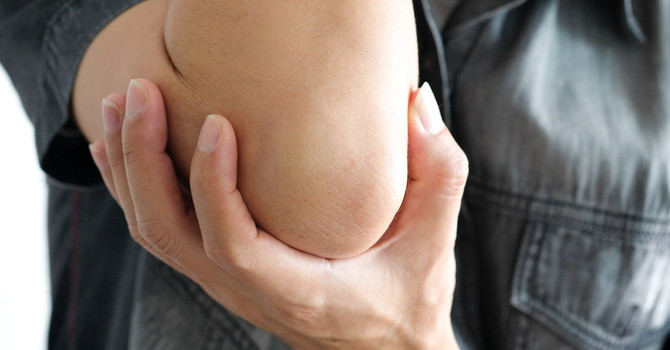
Piriformis Syndrome: It’s not about the tennis ball
Pain in the buttocks? Then you may have heard about placing a tennis ball in a chair and sitting on it. The pressure from the tennis ball helps to relax gluteal muscles and relieve pain. But why is this? The answer is something called piriformis syndrome.
Piriformis syndrome is a common neuromuscular problem traditionally caused by spasm or enlargement of the piriformis muscle, resulting in compression or pressure on the sciatic nerve.1 The sciatic nerve starts in your low back and travels near the piriformis, which is a deep muscle in your buttock.2 The piriformis muscle attaches from the lowest part of your spine (sacrum) and travels across diagonally to your hip. And chances are, if you’re sitting while reading this blog, you’re sitting on your piriformis muscle right now!
As the sciatic nerve travels down toward your leg, it has a chance to become compressed underneath the piriformis muscle.2 In most people, the sciatic nerve travels deeply and safely beneath the piriformis muscle. However, approximately one-fourth of the population is more likely to suffer from piriformis syndrome because their sciatic nerve passes through the muscle. When the piriformis muscle is irritated or goes into spasm, it may cause painful compression of the sciatic nerve. Think of a tightening noose around someone’s neck – that’s how the sciatic nerve feels when compressed by an overly tight or injured piriformis muscle.
The piriformis is the powerhouse of our buttocks and a wonderful companion to the rest of the gluteal muscles unless injury, muscle spasm, or anatomical anomalies occur.2,3 If this occurs, piriformis syndrome can result.
What does Piriformis Syndrome feel like?
This neuromuscular condition is a genuine pain in the rear: Tenderness, numbness, and pain in the buttocks that extends down the back of the leg are the most common symptoms.
Other symptoms of piriformis syndrome include:
· Discomfort while sitting
· Pain while climbing stairs or walking
· Restricted motion in the hip
· Pain, numbness, or tingling traveling toward the foot
· Pain or burning-like sensation that worsens with flexion, adduction, and internal rotation of the hip
Symptoms often increase when you are sitting or standing in one position for longer than 15-20 minutes. Changing positions may provide temporary relief. You may notice that your symptoms increase when you walk, run, ride a bicycle, climb stairs, ride in a car for long periods of time, sit cross-legged, or get up from a chair.
What is NOT Piriformis Syndrome?
Piriformis can be mistaken for sciatica, an inflammation of the sciatic nerve that comes from the low back and travels down the back of the leg toward the foot. Piriformis syndrome pain may be burning or aching in nature like sciatica symptoms, with pain in the posterior gluteal region migrating down the back of the leg.4 However, the cause of sciatica compared to the cause of piriformis syndrome is distinctly different. There are various reasons why sciatic nerve entrapment occurs, but when it is caused specifically by the piriformis muscle, it is called piriformis syndrome.
There can be other conditions that happen alongside piriformis syndrome. Although these secondary conditions do not directly cause the piriformis to tighten along the sciatic nerve, they can contribute to or complicate the problem. These include:
· Sacroiliac pain. Because the piriformis muscle also arises from the capsule of the Sacroiliac (SI) joint, the association between piriformis syndrome and SI joint pain exists.4
· Femoroacetabular impingement (FAI).5 This distinct hip joint problem is caused by a change in the shape, or anatomy, of the major hip joint. The result is decreased internal rotation of the hip, which may contribute to contracture (tightening) of hip and gluteal muscles, and subsequent compression of the sciatic nerve.
What causes Piriformis Syndrome?
The onset of Piriformis syndrome may begin suddenly because of an injury or develop slowly in response to repeated irritation. Common causes of piriformis irritation or spasms can result from a strain, a fall onto the buttocks, or catch oneself from a “near fall.”
In other instances, the process may begin following repetitive microtraumas such as long-distance walking, stair climbing, or sitting on the edge of a hard surface or a wallet. In many cases, a specific triggering event cannot be pinpointed. The condition is most common in 40-to-60-year-olds and affects women more often than men.
Your Doctor of Chiropractic is the best person to take a history and perform a physical and orthopedic examination to determine if you have piriformis syndrome. If you or someone you know is diagnosed with piriformis syndrome, the good news is, most cases are best and easily treated with conservative, non-invasive interventions.
What is the best way to treat Piriformis Syndrome?
Pain and discomfort arising from piriformis syndrome is one of the most treatable varieties and is relieved by the type of treatment provided in our office. Treatment may include stretching, myofascial release, and correction of underlying biomechanical dysfunction.
You may need to temporarily limit activities that aggravate the piriformis muscle, including hill and stair climbing, walking on uneven surfaces, intense downhill running, or twisting and throwing objects backward. Changes in body position and ergonomics may include changing your sitting posture, not sitting on one foot, and taking frequent breaks from prolonged standing, sitting, and car rides. Other forms of treatment may include aquatic therapy, physiotherapy, or a referral and co-management with another provider for NSAID medication or injections. Thankfully, surgical release of the piriformis muscle and decompression of the sciatic nerve is the last resort, and for good reason – most cases respond well to conservative care.4,5
References
1. Martin, H. (2017). Deep gluteal space syndrome. Chicago Sports Medicine Symposium: World Series of Surgery. Session XV: Hip Session II- Extra-Articular Hip and Pelvis Pathology.
2. Cass, S.P. (2015) Piriformis syndrome: a cause of nondiscogenic sciatica. Curr Sports Med Rep. Jan;14(1):41-4.
3. Fishman, L.M., Dombi, G.W., et al. (2002). Piriformis syndrome: diagnosis, treatment, and outcome--a 10-year study. Arch Phys Med Rehabil. Mar;83(3):295-301.
4. Carro, L.P., Hernando, M.F., et al. (2016). Deep gluteal space problems: piriformis syndrome, ischiofemoral impingement, and sciatic nerve release. Muscles Ligaments Tendons J. Dec 21;6(3):384-396.
5. Newman, D.P., and Zhou, L. (2021). Piriformis Syndrome Masquerading as an Ischiofemoral Impingement. Cureus. Sep 16;13(9):e18023.



